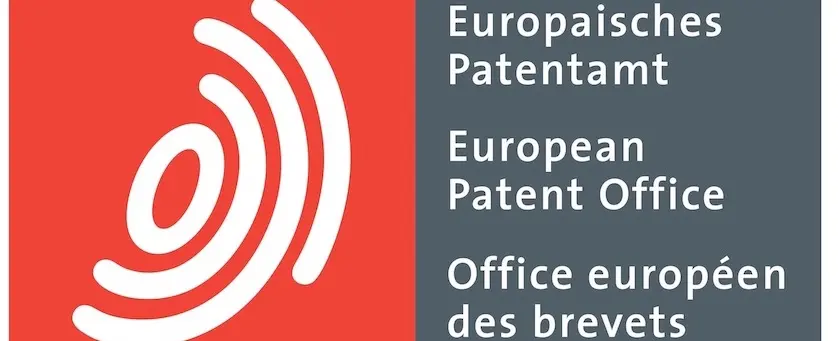Apply for a Patent in the EU with the Unitary Patent System
Discover how to apply for a patent in the entire European Union with the Unitary Patent system

The European Union Unitary Patent, which took effect on June 1, 2023, is a European patent system that allows inventors to obtain protection for their invention with a single granted patent in the EU countries that have joined the Unitary Patent system. At its launch, these included the following 17 EU countries: Austria, Belgium, Bulgaria, Denmark, Estonia, Finland, France, Germany, Italy, Latvia, Lithuania, Luxembourg, Malta, Netherlands, Portugal, Slovenia, and Sweden. Importantly, the traditional European patent system—based on individual national validations—continues to exist alongside the new Unitary Patent system. Applicants can choose the route that best fits their needs, but that choice may have significant legal consequences. In typical EU fashion, simplicity has given way to parallel systems, each with its own rules and strategic considerations....
Before the new system was introduced, applicants seeking patent protection across several EU countries had to apply for individual national patents in each country. This was time-consuming and costly, as patent applications and legal proceedings had to be conducted separately in each jurisdiction. The Unitary Patent system was designed to streamline this process by providing a single, unitary patent valid across all participating EU member states. However, the classic European route via the European Patent Office (EPO), leading to a bundle of national patents, remains available and widely used.
Protecting your invention through patents or other forms of intellectual property isn't just a legal formality — it's a very important step in nearly every path to commercial success. Whether you plan to sell just the idea, develop and sell a working prototype, or launch and scale a business yourself, securing your IP helps you strengthen your market position, attract partners or investors, and prevent others from copying or exploiting your invention. In many cases, your IP is your most valuable asset — so make sure you treat it that way.
That said, at the start, it was such a great idea: applying for a patent in all EU countries at the same time with one procedure. And it was called the Unitary Patent. After all, it was - and still is - the case that with the classic European route for applying for a patent, the procedure for submitting the application goes through the European Patent Office (EPO). That in itself is well arranged, but then it really starts.
The applicant must then make a choice in which countries in Europe the patent will be continued, with things being arranged slightly differently in each country. The applicant thus comes into possession of a bundle of patents, which is why this is referred to as a bundle patent.
Translations are often required and, in each country, you have to pay for maintaining the patent. In addition, any infringement of the patent in the relevant country must be subject to litigation. The idea of the Unitary Patent was that all this is no longer necessary and that with one procedure the invention is protected on the entire European market.
After all, that was the big difference with a patent in the USA. There it is also possible to protect an invention on the entire American market with one patent. And in Europe, protection must be sought in all countries individually, which entails much more hassle and higher costs.
The Unitary Patent is of course a nice idea, but it has all the time not been introduced because the plan had a number of problems. What was the downside? The classic European patent can be registered in a total of 38 countries. This concerns the countries that are part of the European Union as well as a number of others such as Norway, Switzerland and Turkey. On the contrary, the Unitary Patent will only be valid in countries that participate in the treaty, which are therefore not all EU Member States. Because although a large number of countries have already ratified the treaty, a number of countries are not participating, for example, Poland and Spain.
The Delivery of the Unitary Patent System took many years
The discussion about a European patent has been going on for a long time because already in 2011 (!) I have written on a previous webpage about the delay of the unitary patent. In those days in particular Spain and Italy caused problems. They only wanted to allow the publication of the patent in English or in the language of their own country. They feared that their internal market would collapse if the current system was changed.
Why Did Spain and Italy Initially Oppose the Unitary Patent?
One of the main obstacles in launching the Unitary Patent system came from Spain and Italy, who resisted the proposed language regime. They opposed limiting the official publication languages to English, French, and German — the so-called EPO "trilingualism." But why such strong resistance?
Simply put, language is access — and access means opportunity. Spain and Italy feared that their local businesses, especially small and medium-sized enterprises (SMEs), would be at a disadvantage if patents were no longer published or translated into Spanish or Italian. Without translations, local companies might miss important technical information, infringe unknowingly, or be discouraged from participating in the European patent system altogether.
There were also economic concerns: removing translation requirements meant less work for national patent attorneys, translators, and IP professionals. This posed a threat to domestic service industries and reduced national oversight of patent enforcement on their markets.
In short, these countries feared that the new system could erode local competitiveness, shift advantages to large international firms, and reduce the visibility of intellectual property protection within their borders. Their resistance wasn't just bureaucratic — it reflected deep concerns about economic sovereignty and fairness.
This debate is a textbook example of how European integration often goes: great ideas complicated by differing national interests, languages, and legal traditions. Why make it easy when you can make it European?
As Henry Kissinger famously asked: “Who do I call if I want to speak to Europe?”
At the end it turned out that a majority of the member states were fed up with the hassle and in a decisive meeting, where emotions were running high, the decision was made to a - so-called - enhanced cooperation. This means that certain rules only would apply in those countries that wanted to and, furthermore, that some EU countries will participate in the Unitary Patent and others will not.
In addition, a legal objection procedure against the introduction was still pending in Germany, but this country has now also ratified the treaty. After that, it became quite a hassle with Brexit, but the UK ultimately does not participate. Anyway, the Unitary Patent was finally and definitively introduced on 1 June 2023.
In short: with the Unitary Patent, it is not necessary to have the patent application tested separately in each Member State. The patent automatically provides protection in all participating EU countries at the time of approval. In addition, a single rate applies to the Unitary Patent. And, if a patent is infringed or if you want to challenge a competitor's patent, you can turn to one body: the Unified Patent Court (UPC).
The UPC handles disputes involving Unitary Patents and, unless opted out, classic European patents. It enables central enforcement with one ruling valid in all participating countries.
Key locations: Main divisions in Paris and Munich; local divisions include The Hague, Netherlands, opened May 2023.
Risks: Central Enforcement Can Cut Both Ways
UPC rulings apply EU-wide. That means a single nullity claim could invalidate your patent in all 17 countries. To avoid this risk, patent holders can file an opt-out — more on that below.
Since the UPC was introduced, already existing national approvals for classic European patents in countries that have ratified it apply to both the UPC and the national courts. This will automatically be the case unless the patent holder chooses via an opt-out not to apply to the UPC. The greatest risk for the patent holder under the UPC system is that another party may submit a request to declare the patent to be invalid by the UPC. This risk can be prevented by actively withdrawing the authority of the UPC. As a European patent holder, you must arrange this yourself. So, you can submit a statement to exclude your application or European patent from the UPC agreement (this is called the opt-out).
This can be done at least three months before the agreement takes effect, but also during a transitional period, as long as no procedure has been initiated at the UPC by a third party. Submitting an opt-out prior to the installation of the UPC will prevent a third party from filing an invalidity claim once the UPC takes effect. This "sunrise" period started on March 1, 2023, after Germany also ratified the UPC. The opt-out remains valid as long as the patent is in effect, even after the transitional period has been set. You can cancel the opt-out at any time, as long as no proceedings have been initiated before a national court. However, you can only cancel the opt-out once and this is then final. This is a complex matter because every decision you make has a number of pros and cons. It is therefore very wise to discuss this with your patent attorney before making a decision.
Costs and Legal Impact of hte Unitary Patent System
While Unitary Patents reduce admin and litigation costs, they aren't always cheaper. For broad protection, they offer strong value. UPC litigation may be more efficient, but complex cases can still be expensive — and losing means losing everything across all 17 states.
After the joint application procedure, a classic European patent must be assessed and granted separately in each desired European country. And in the event of a conflict, it must also be fought out in court separately in each country. The idea was now to have such a conflict about a certain Unitary Patent handled by the Unified Patent Court (UPC), which is yet to be established, and that the ruling would then also be valid in all selected countries. More protection for less money was the idea.
The UPC should also only handle patent cases where the judges must also come from different countries. In addition, the UPC should also ensure that the total costs of going to court would be much lower than in the case of a classic European patent where several lawsuits would have to be conducted simultaneously in different countries. This often costs millions of euros.
It is expected that a lawsuit will generally be cheaper for the UPC than the various lawsuits, such as in the case of a European patent. However, when it concerns a complex case, such a lawsuit could also run into the millions of Euros. Furthermore, the disadvantage is that if a lawsuit is lost by the UPC, the case is immediately lost in all selected countries.
Conclusion: Opportunity or Threat?
The Unitary Patent System is a big step forward, but it's not risk-free. It streamlines protection but also concentrates legal exposure. Patent holders must carefully weigh their strategy — especially whether to opt out of UPC jurisdiction.
Talk to your patent attorney before making a decision. They are specilists and can help to guide your choices.

